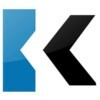My time at LinkedIn was nothing short of transformative. When I joined the company, it was clear that LinkedIn was poised to revolutionize the professional world, but no one could have predicted just how pivotal the platform would become.
I had the privilege of being part of this evolution, playing a key role in building what would eventually become one of LinkedIn’s most successful products—Sales Navigator.
Sales Navigator was more than just a tool; it was a game-changer for sales professionals around the globe. The challenge was clear: how do we turn a vast network of professionals into a dynamic sales engine?
The answer lay in social selling, a concept that was still in its infancy when I started. I became deeply involved in shaping this strategy, blending content marketing with social selling techniques to create a powerful framework that sales teams could use to drive results.
My work involved not just developing the strategy but also evangelizing it—both within LinkedIn and to our clients. I led numerous training sessions, webinars, and workshops, teaching sales professionals how to leverage LinkedIn’s platform to build relationships, generate leads, and close deals.
This hands-on approach allowed me to see firsthand the impact of our work, as companies began to see real, measurable results from our strategies.
One of my proudest moments at LinkedIn was watching Sales Navigator grow from an idea into a billion-dollar business unit. It was a testament to the power of combining innovative thinking with the right tools and a strong commitment to helping our users succeed.
The lessons I learned during this time have shaped my approach to marketing and business ever since, reinforcing the belief that visibility and value are the cornerstones of success.







